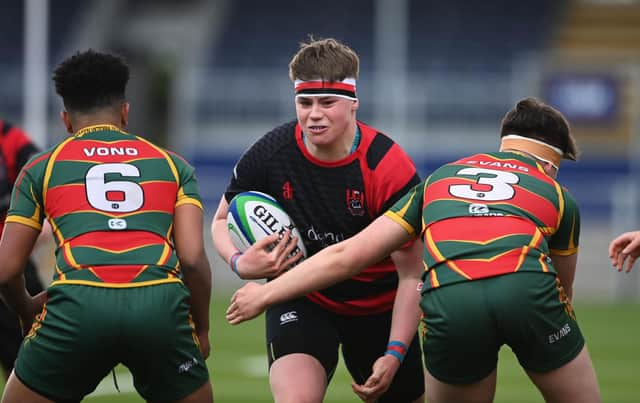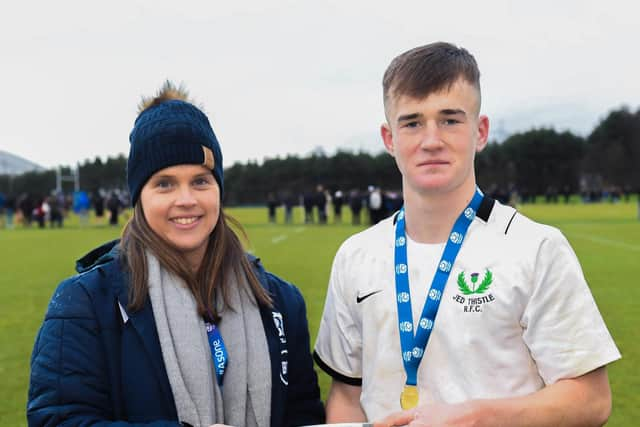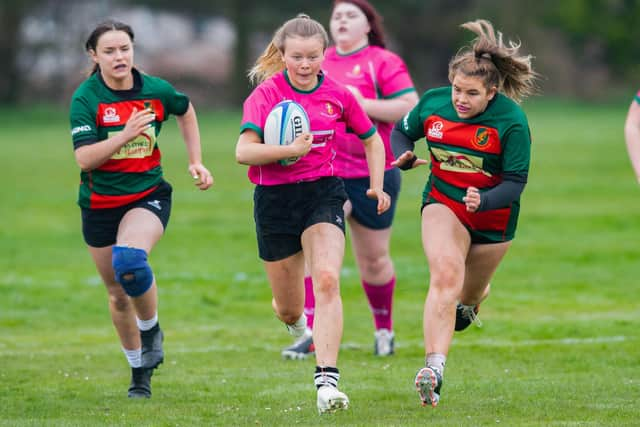Scottish Rugby to invest £3m into state schools in bid to close gap with private sector


The Scottish Rugby Union is reaching out to the state sector with what is likely to eventually be a £3 million-plus investment which they hope will drive up playing numbers.
It is an important project and arguably an essential one given the narrowness of playing resources in Scotland. The men’s national side’s reliance on those who qualify through grandparents or on residency grounds is ample proof that the country is not developing enough of our own talent.
Advertisement
Hide AdAdvertisement
Hide AdThe wider issue of keeping young people engaged in sport is possibly even more important given the attendant health and social benefits.


The programme, which will be delivered over the next six years and will have a total of £540,000 brand-new budget allocated to support it on an annual basis, has six strategic aims:
1. Increase rugby activity in schools.
2. Increase the number and diversity of pupils involved in the game.
3. Improve the quality of game play.


4. Increase the number of fixtures played by state school teams.
5. Provide stronger links to clubs to increase player and volunteer retention.
6. Support the delivery of the Scottish Rugby’s Women and Girls’ Strategy.
Gav Scott, Scottish Rugby’s director of rugby development, knows that competing interests means it is harder than ever to keep young people involved but has been encouraged by results from pilot projects in the north-east of Scotland.
“The landscape of schools rugby has changed massively,” said Scott. “There are fewer traditional rugby PE teachers who would run five teams on a Saturday morning.
Advertisement
Hide AdAdvertisement
Hide Ad“But in the last couple of years we’ve found we’re more able to get rugby to fit within schools. Through our pilot schemes we’ve found that we’ve been able to meet Curriculum for Excellence and other educational criteria, and in areas like Aberdeenshire Council they are rolling out rugby as part of the curriculum for everyone because our team up there has managed to integrate our rugby programmes in a way that helps them demonstrate that they can use it as one of the vehicles to help close the attainment gap and give kids more confidence and better self-esteem.
“We firmly believe that there should be more than two hours of PE per week at schools for senior pupils and that PE and sport should be more widely accessible through the curriculum and as part of the school day.”
The amount of money pumped into rugby at many of Scotland’s fee-paying schools means they are out of front in terms of the teams and players they produce. They have dominated the Scottish Schools Cup and you have to go back to Bell Baxter HS’s triumph of 2006-07 for the last time the trophy was won by a state school.
With many fee-paying schools hiring ex-players to lead their coaching and investing in strength and conditioning expertise, video analysis and nutrition, it is hardly a level playing field, particularly when they then lure away some of the best talent from the state schools with offers of scholarships, but Scott knows they are bringing through players for the pro game.
“They’ve got great rugby programmes and I’m absolutely delighted with the programmes they run,” he said. But he is keen to close the gap.
“This is a baseline strategy,” he continued. “We’re saying nationally we want to work with state schools and work in ways where we can help, so schools are able to do it and we have invested people in those schools and we can get them to a standard so they can start to compete with other schools, whether independent or not. And we know that will take time.
“It’s us giving a scaffolding to schools to see how they can fit into the system and how we can support them.”
The first area of investment includes the recruitment of six school rugby officers who will develop curriculum-based and extra-curricular programmes, and seek to increase the diversity of pupils involved. They will work closely with the local rugby development officers and also look to “upskill” teachers in terms of their rugby.
Advertisement
Hide AdAdvertisement
Hide AdTwo of six school rugby officers will be based in Glasgow. It is the most densely populated city but you could probably count on one hand the number of Glasgow state school pupils who have played for Glasgow Warriors and Scott knows the city could be a huge source of untapped potential.
“I think it’s a great opportunity for Scottish rugby,” he said. “We know there are 70,000 school kids in the Glasgow city centre area and it’s something we can support more. We realise the potential for growth there. It’s an opportunity for us to get into schools we’ve never been into before.”
Results from the pilot scheme have been encouraging. In Dundee, there had been a real drop off in rugby in state schools, so much so that none was playing the sport six years ago.
“We employed a regional development officer, Sarah Hogwood, and her role over the last three years has been to target rugby at state schools in Dundee and we’re now at a point where we’ve five got five high schools in Dundee who have rugby on their curriculum,” said Steve Turnbull, director of rugby at Caledonia Midlands.
The aim now is to reproduce that across the country, working in partnership with clubs.
“Our strategy shows a clear statement of intent to enhance current offerings and develop new partnerships between schools, local authorities, clubs and other stakeholders, whilst also providing the necessary equipment, training and provision to enable state schools to deliver high quality programmes and rugby environments,” added Scott.
“The quality and variety of playing and training opportunities within state school settings has a significant influence on people’s lifelong engagement in rugby.... which has inclusion, respect and wellbeing at its core.”
Comments
Want to join the conversation? Please or to comment on this article.

